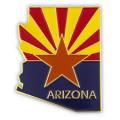Ok.. so.. like many of us.. I've been tinkering cars for a long long time. I've done full rebuilds, tuned EFI systems, built a simple super charger kit for my Subaru... and now I'm on a Mk4.
I like to think I'm pretty dang knowledgeable about cars and the works. So.. someone tell me if my thinking here is off.. or if the people who've answered my question are idiots? I'm hoping for the latter.
I sent an email to both QuickFuel tech, and Holley. I asked each of them a question about a particular Fuel Pressure Regulator in each of their lineups. Same question, 2 different regs. The holley was the 12-803bp, and the QuickFuel 30-900. Both are bypass style regulators.
In short I asked the max flow rate capacity of each regulator. I would have assumed this max would be for it's lowest psi setting, but wasn't sure. I told them I had a stock in-tank EFI pump rated at 30gph (110lph) free flow. I wanted to know of either regulator could handle that volume of fuel, and still manage to regulate down to the 5 psi I need for my carburetor setup. Neither of their sites list of any sort of capacity.
I happen to have a Vortech SFMU on my 2000 Subaru, behind a Wallbro 255 pump, raising the fuel pressure at 1:6 as high as 70psi based on the boost I'm pumping in via a M62 supercharger. ( yes, I have supercharged Subaru) So.. again.. I'm pretty confident in my knowledge of fuel and pressure and how it works.. bla bla.. yada yada...
Correct me if I'm wrong (I don't think I am).. but.. pressure is simply a product of the restriction to a flow, given the ability for a pump to push against the restriction.
(note.. the following numbers are made up to simply try and explain my point)
So.. an EFI pump capable of maxing out at 60psi, will make practically zero psi of pressure pumping fuel through a garden hose right back into the tank in a loop... but at the same time can easily produce 30psi up against a proper FPR. So long as the FPR can handle the "bleed" fuel volume to the return, and the return has little-to-no restriction either... the FPR will maintain that steady 30psi. If the FPR can't bleed off enough fuel, the pressure will not be accurate.
Another eg... If the fuel pump will flow 5-gph at 30psi, and the EFI-FPR can handle a max flow of 20gph at 30psi... we're good to go right?
Same thing again... .only with a bypass FPR set to only 5psi. If it has a max capacity of 30GPH at it's lowest pressure (4psi). And the pump will flow 20GPH at 5psi.. so.. again.. the FPR should be able to handle a steady 5psi right?
What is my point?
Ok.. so.. both the QuickFuel guy, and the guy from Holley said the same basic thing.
"Our FPR can't handle the pressure from your pump"???
WTF?? Ok.. sure.. I realize that if the FPR is fed more fuel flow than it can handle, it will itself be an excessive restriction.. and the pressure will rise.. and the 5psi will be impossible. I get that.
But.. am I crazy in thinking they don't know what they are talking about? Claiming only that my pumps pressure is too high?
That doesn't make sense to me.. it's the FPR that will effectively create the pressure... so long as it can handle the bypass capacity?
I even responded to teh QF guy asking for clarification.. and his answer was "The 30-900 Is a by-pass style regulator and that can only by-pass fuel pressure up to 20 PSI when regulating down to 4.5-7".
That made no sense to me since .. once again.. the FPR is the one creating the pressure.



- Home
- Latest Posts!
- Forums
- Blogs
- Vendors
- Forms
-
Links

- Welcomes and Introductions
- Roadster
- Type 65 Coupe
- 33 Hot Rod
- GTM Supercar
- 818
- Challenge Series
- 289 USRCC
- Coyote R&D
- Ask a Factory Five Tech
- Tech Updates
- General Discussions
- Off Topic Discussions
- Eastern Region
- Central Region
- Mountain Region
- Pacific Region
- Canadian Discussions
- Want to buy
- For Sale
- Pay it forward
-
Gallery

- Wiki-Build-Tech


 Thanks:
Thanks:  Likes:
Likes: 


 Reply With Quote
Reply With Quote






